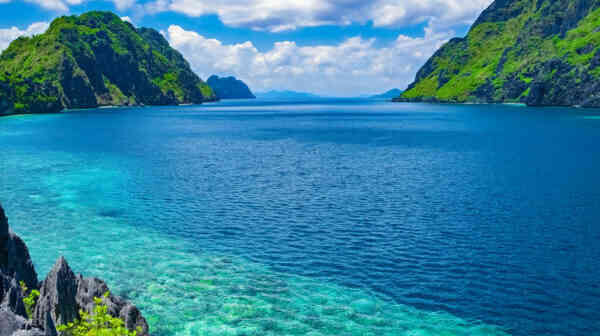Those who still get here are forever fascinated by the unique nature of the Philippine Sea, which is difficult to compare with any other part of the World Ocean. Transparent water, coral lagoons, a riot of life in the water column … And also regular storms, of course – where can we go without them in the tropics?
Interesting facts about the Philippine Sea
- It washes the shores of the territories belonging to the Philippines, Micronesia, Japan, Taiwan and the United States – the latter includes the island of Guam, which de jure is not an American state, but has the status of a territory freely incorporated with the United States.
- Among all the seas of the earth, the Philippine is the second largest after the Sargasso, and the latter, as you know, has no shores, therefore, among the seas bordering land, it is the Philippine that is the largest (interesting facts about the Sargasso Sea).
- At the bottom of the Philippine Sea, many underwater volcanoes rise, many of which have a height of more than 3 kilometers from the bottom to the top.
- On the territory of the Philippine Sea, it would be possible to place such a state as France as many as 10 times.
- Sometimes here, during underwater eruptions, volcanic bombs fly to the surface, and ash islands quickly washed away by waves are formed.
- Mountain ranges at the bottom of the Philippine Sea have a length of up to 2500 kilometers.
- The first Europeans to cross the Philippine Sea were the famous navigator Ferdinand Magellan and members of his expedition (interesting facts about Magellan).
- Its average depth exceeds the mark of 4100 meters.
- The volume of the waters of the Philippine Sea, according to scientists, reaches 23.5 million cubic kilometers.
- The Philippine Sea has practically the same salinity everywhere – in its different parts, the difference in this indicator does not exceed 1 percent.
- It is in the Philippine Sea that the deepest point on Earth is located – the Challenger Abyss, in the Mariana Trench. According to the results of recent research, the depth in this place is 10994 meters (interesting facts about the Mariana Trench).
- Like the Republic of the Philippines, this sea got its name in honor of the Spanish King Philip.
- During the rainy season, that is, from about the end of May to the beginning of October, some of the strongest hurricanes in the world often rage over the Philippine Sea.
- The so-called Pacific Ring of Fire passes through the Philippine Sea, the zone of the highest seismic activity in the world, which arose at the junction of two lithospheric plates.
